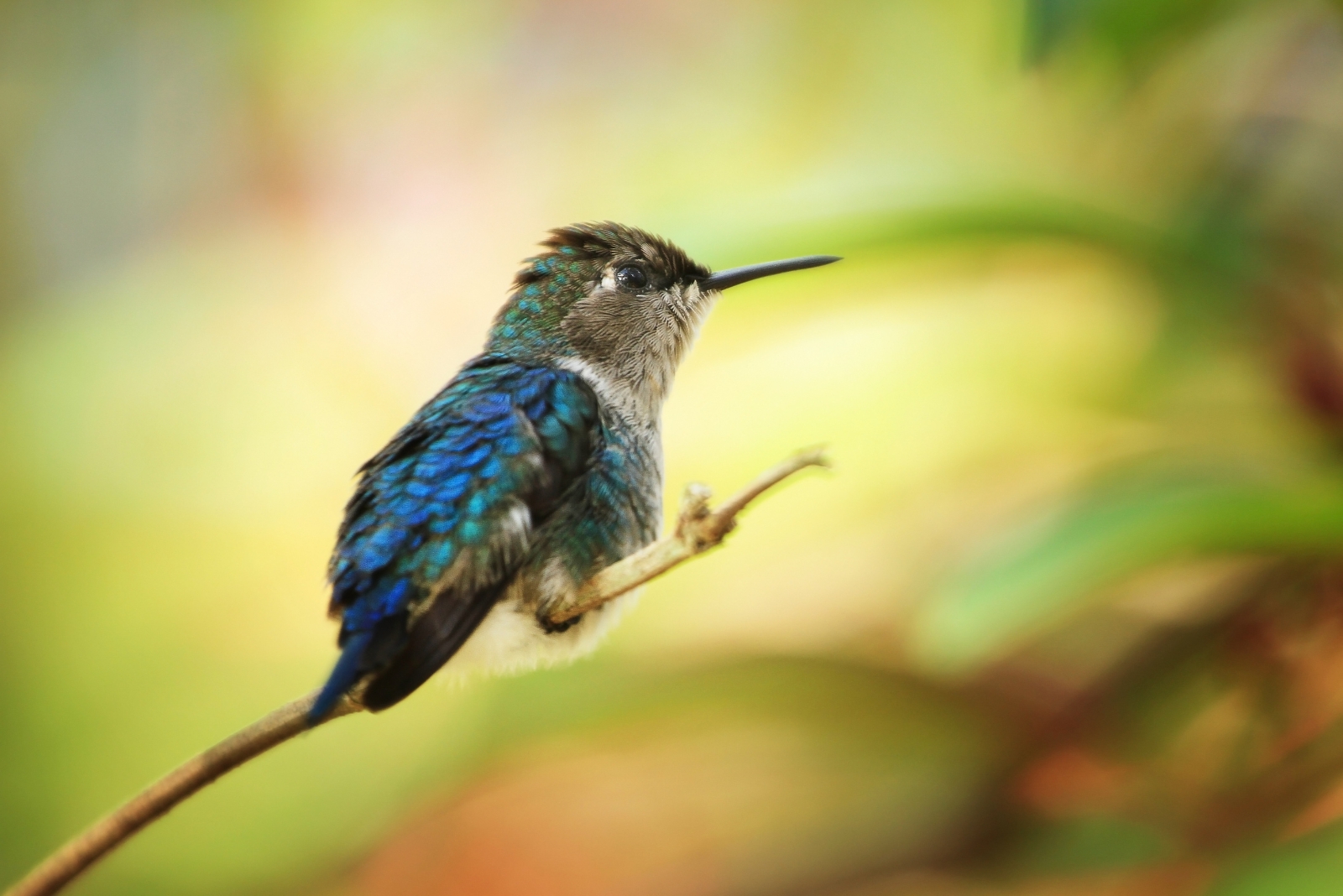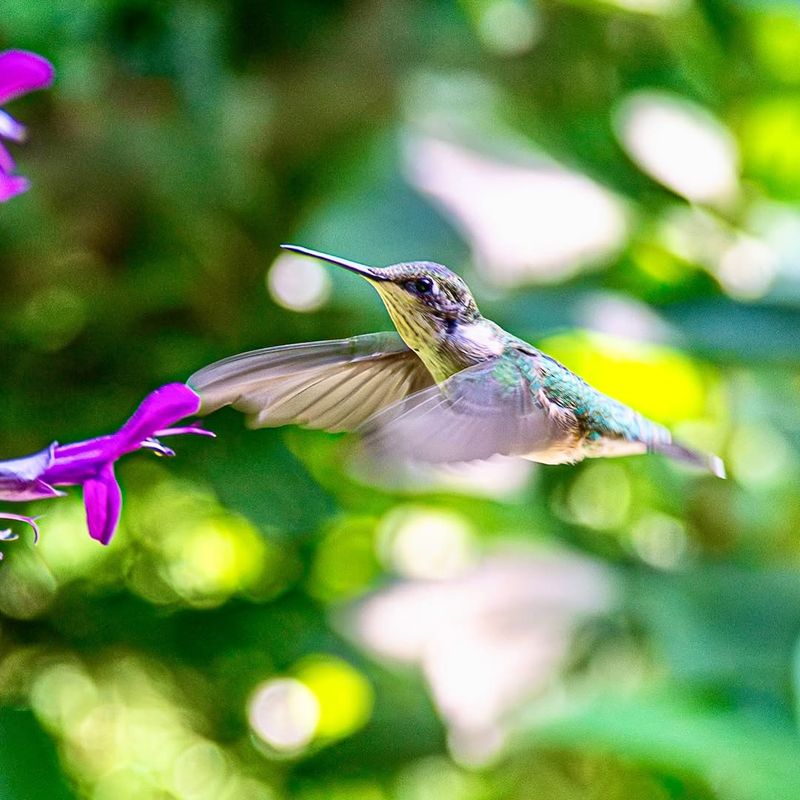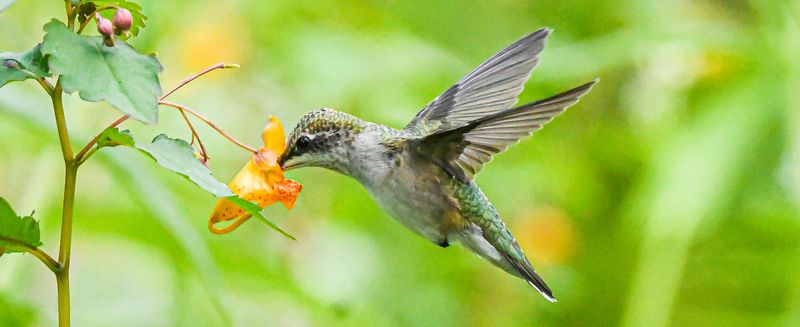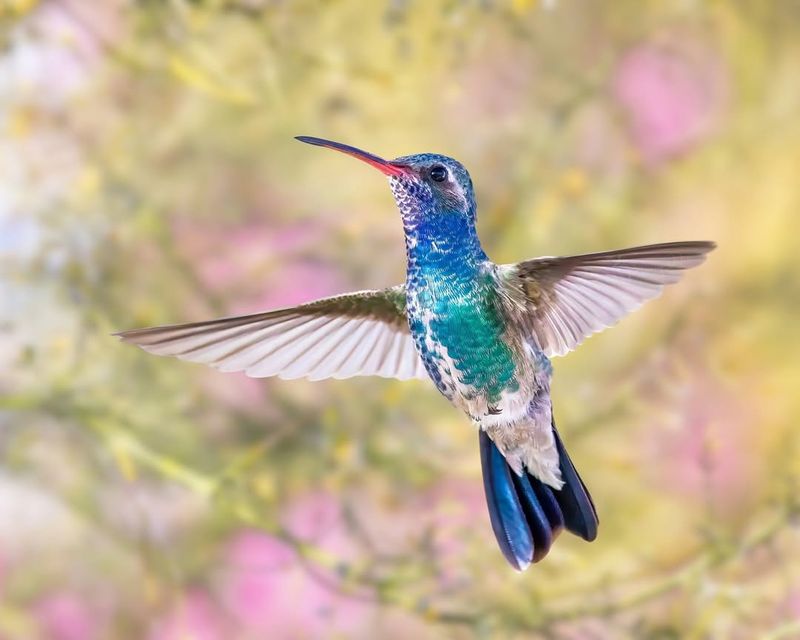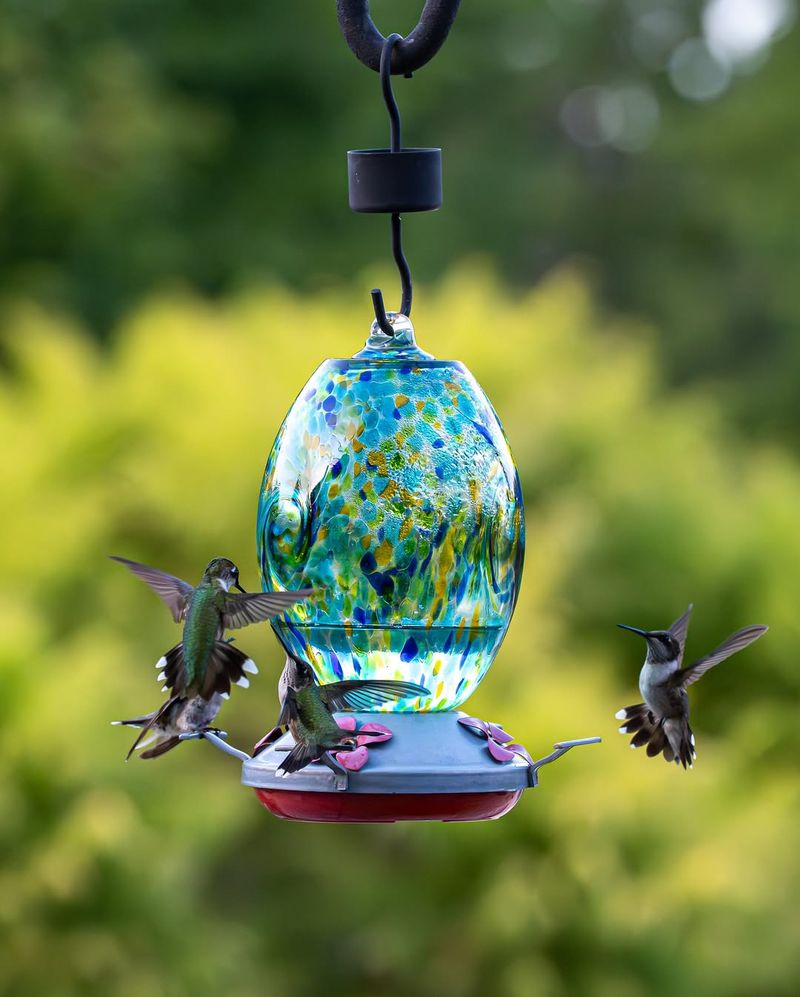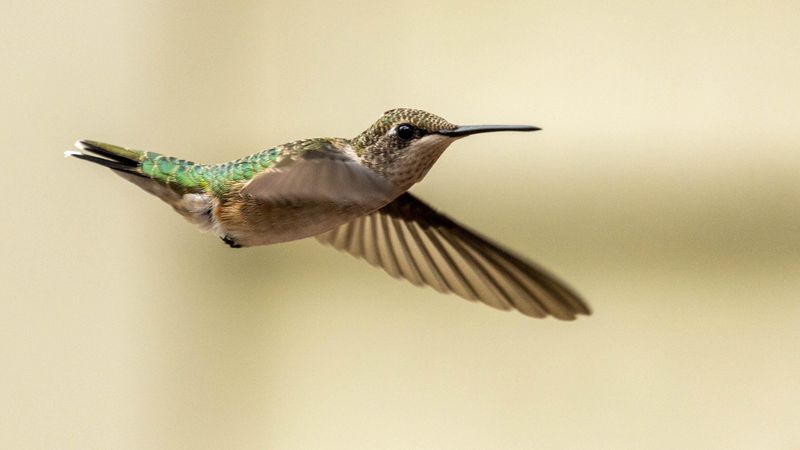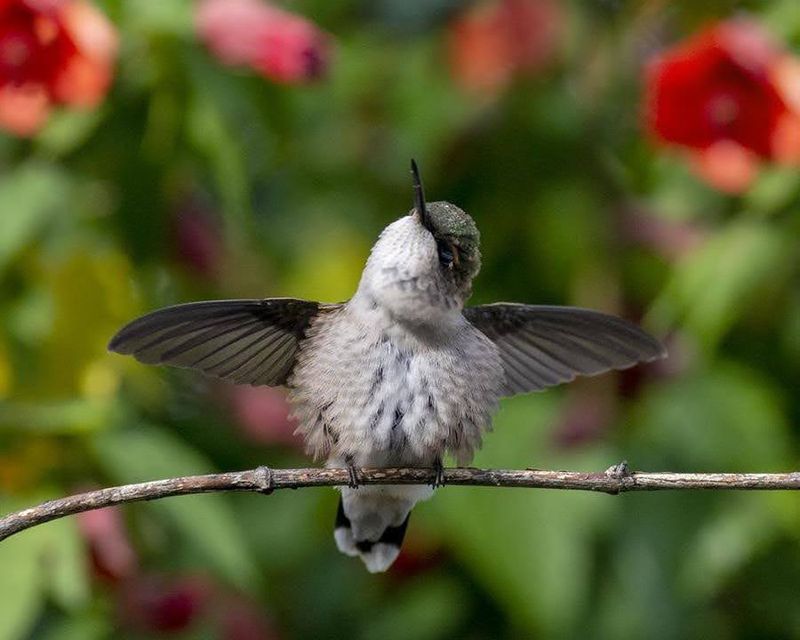As summer winds down in North Carolina and nectar sources begin to dwindle, hummingbirds follow an internal clock that tells them it’s time to move. Their migration isn’t random—it’s tied to daylight hours, food availability, and instinct passed down through generations.
Knowing when these birds leave can help backyard watchers adjust feeders, support their journey, and better understand the seasonal rhythm that guides these remarkable travelers.
1. Peak Migration Happens In September And October
Most ruby-throated hummingbirds start leaving North Carolina between mid-September and late October. Males typically head out first, sometimes as early as late August, while females and young birds follow a few weeks later.
You’ll notice fewer visitors at your feeders as the weeks progress. Some stragglers might linger into November, especially during warmer years, but the majority complete their journey before the first frost arrives in most parts of the state.
2. Ruby-Throated Hummingbirds Dominate North Carolina
Nearly every hummingbird you spot in North Carolina belongs to one species: the ruby-throated hummingbird. Males sport that famous shimmering red throat patch that catches sunlight like a jewel.
While rare visitors from other species occasionally pass through during migration, ruby-throats make up over 99% of sightings. Females and juveniles lack the red throat but display beautiful green backs and white undersides. Recognizing this species helps you understand their specific migration patterns and needs throughout the season.
3. Temperature Changes Trigger The Journey South
Cooler nighttime temperatures and shorter daylight hours in North Carolina signal hummingbirds that it’s time to migrate. Their internal clocks respond to these natural changes rather than food availability alone.
Even if your feeders remain full and flowers bloom abundantly, instinct drives them southward. Hormonal changes prepare their bodies for the demanding flight ahead, causing them to eat more and build fat reserves. This biological programming has evolved over thousands of years to ensure survival during their incredible journey to Central America.
4. Keep Feeders Up Through November
Don’t rush to take down your feeders once September arrives in North Carolina. Late migrants and occasional stragglers depend on these food sources during their exhausting journey.
Leaving feeders available through early November ensures no hungry travelers go without nourishment. Some folks worry that feeders prevent migration, but that’s simply a myth. Hummingbirds migrate based on instinct, not food availability, so your feeders provide helpful fuel rather than trapping birds. Clean and refill them regularly until you haven’t seen visitors for two full weeks.
5. They Travel Incredible Distances Alone
Ruby-throated hummingbirds embark on solo journeys covering up to 2,000 miles to reach their wintering grounds in Mexico and Central America. Unlike geese or other birds, they don’t migrate in flocks or follow leaders.
Many brave a nonstop 500-mile flight across the Gulf of Mexico, an astonishing feat for a creature weighing less than a nickel. They prepare by nearly doubling their body weight through intensive feeding, storing enough fat to fuel this marathon flight without rest or food.
6. Western North Carolina Sees Earlier Departures
Geography matters when predicting migration timing across the state. Mountain regions in western North Carolina experience cooler temperatures earlier, prompting hummingbirds to leave by mid-September in many areas.
Coastal and eastern regions enjoy warmer conditions longer, allowing birds to linger into late October or even early November. Elevation differences of just a few thousand feet can shift departure times by several weeks. If you live in the mountains, expect to say goodbye to your feathered friends sooner than your cousins near the coast.
7. Rare Overwintering Birds Sometimes Stay
Occasionally, individual hummingbirds buck the trend and remain in North Carolina through winter. Rufous hummingbirds from the western United States sometimes wander eastward and overwinter here, while rare ruby-throats might stay if conditions remain mild.
If you spot a hummingbird after December, report it to local birding organizations. Keep one feeder available and bring it inside at night when temperatures drop below freezing. These unusual visitors provide exciting opportunities for observation while reminding us that nature always holds surprises.

